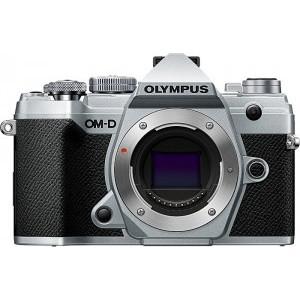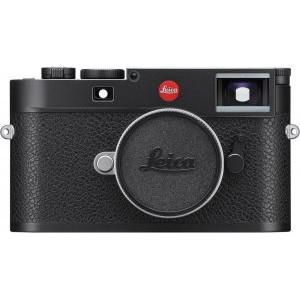


| Announced: | 17 Oct 2019 |
|---|---|
| Sensor Resolution: | 20Mp |
| Sensor Type: | 4/3 CMOS |
| ISO: | 200-25600 |
| Weight: | 414g |
| Physical Dimensions: | 125 x 85 x 50 mm |
| Viewfinder: | Electronic |
| Screen Type: | 3" Fully articulated |
| Video Resolutions: | 4096 x 2160 |

45

44

62

68

71
This post contains affiliate links and I will be compensated if you make a purchase after clicking through my links. As an Amazon Associate I earn from qualifying purchases.
 pro
pro cons
consA substantial upgrade from the E-M5 Mark II, the Olympus OM-D E-M5 Mark III is a mirrorless with a 20.4 mp Micro 4/3 sensor, released in November 2019, almost four years after the model that preceded it. In the OM-D range of the Japanese house, the Olympus OM-D E-M5 Mark III is halfway between the ambitious E-M1 Mark II, and the entry-level model E-M10 Mark IV.
It is a mirrorless dedicated to those consumers who (presumably) already know basic digital cameras but are looking for something more than a beginner’s model, without however aspiring to professionalism. The Olympus OM-D E-M5 Mark III can also function very well as a quality second choice for photography professionals.
Launched at the same time for the 100 years of Olympus, the E-M5 Mark III takes up the Mark II model making it lighter and more portable, as well as improving it in the fundamental technical characteristics, by upgrading the sensor from 16 to 20mp. With these improvements, and others that we will see during the review, the Olympus OM-D E-M5 Mark III falls slightly below the professional OM-D E-M1 Mark II and E-M1X models. And among rivals of the same price range, it competes with models like the Fujifilm X-T30, the Nikon Z 50, and the Sony a66 00.
The “light” weight is a key feature when it comes to mirrorless cameras, and with 414 grams this Olympus OM-D E-M5 Mark III hits the target. Its camera body, produced with good quality materials - metal sheets, plastic, and imitation leather - has been created to withstand bad weather (IPX1 certification) and has a very charming, slightly retro, design. The grip, which is not always too satisfactory, is slightly improved compared to the Mark II, from which the E- M5 Mark III deviates for smaller dimensions: 125.3 x 85.2 x 49.7mm.
Available in full black or silver versions, aesthetically the Olympus OM-D E-M5 Mark III brings back in vogue the retro OM-D models with the typical "delta" features on the top. In a nutshell, the camera comes with a retro look revised according to current trends. Its ergonomics, grip aside, offers a happy distribution of the control buttons despite the small space.
On the top of the Olympus OM-D E-M5 Mark III’s plate, there is something different compared to the Mark II: the viewfinder has been made more accessible, while the mode dial is now located on the right side of the top, and also, the BULB mode has been added.
On the touch screen, you can activate the fast functions, a sort of shortcut to bypass the menu, activatable by the controller on the back with four functions, with the central "OK" button. It's a display that helps make this Olympus OM-D E-M5 Mark III a truly more advanced model than the Mark II: articulated in every direction, with a resolution of 1037k dots, it works great for touch focus and for parameter controls, with numerous, advanced and customizable options. The electronic viewfinder has also improved over the previous model, being an OLED (and no longer an LCD) with a resolution of 2,360k dots.
Sensor: Live MOS 4/3 ( 20, 4 megapixel, 4: 3)
Processor: TruePic VII
The AutoFocus: 1 21 AF points
ISO: 64-25600
Display: LCD 3" Touchscreen
Video quality 4K : 4096 x 2160 24p / BPH (about 237 Mbps); 3840 x 2160 30p, 25p, 24p
Interface: HDMI micro, USB 2.0 High Speed, 3.5 mm microphone mini-jack
Wireless connectivity: Wi-Fi and Bluetooth Low Energy Ver.4.2
Battery: Li-ion with approx. autonomy 310 images / 60 minutes video
Dimensions: 125,3 x 85,2 x 49,7 mm
Weight: 366 grams (414 with battery and SD card)
Snappy and fast, the Olympus OM-D E-M5 Mark III's AF system, with 121 cross-type points, has been significantly improved. The display is very reactive when asked to intervene on the shutter, practically immediately. The action scenes are more problematic, of course, but even in these situations, it gets along well even if - given the different modes proposed - the best thing is to choose the one that works best for each situation.
The digital noise shows up at lower ISO levels than the APS-C models but the five axes stabilization of the Olympus OM-D E-M5 Mark III in some way compensates for this problem: with this Camera you have sharp shots without a tripod and with a shutter speed up to 1/4 seconds. With the E-M5 Mark III, the restrictions due to the micro 4/3 sensor are brilliantly neutralized by a stabilization system that works great.
The burst with the mechanical shutter reaches up to 10 fps, which is standard in this market segment, but the buffer of the Mark III tolerates well even the heaviest files. That said, the continuous shooting at 10 fps shows some limits on the homogeneous focusing, so if you want better results, it's better to lower it down to 6 fps, even if with the electronic system and the silencer you get to 30 fps (without continuous focus).
Image and video quality of the Olympus OM-D EM 5 Mark III
When shooting outdoors in normal light conditions, the returned colors are very good with clean and crisp detail (with lens 12-40 mm f / 2.8). With this quality, there is the chance to print, without resorting to digital tricks, up to A3 size formats. What makes these qualitative aspects remarkable is the combination between the renewed sensor and the stabilization of this Olympus OM-D E-M5 Mark III, for which several professional lenses with f / 1.2 aperture are available to reduce the depth of field and improve the blurring.
On the dynamic range, Olympus is always excellent. Also for those who prefer to avoid post-production there is a quite satisfying HDR function, and some color profiles such as Pinhole, Cross Process, and Vintage.
If the image quality is good, the video sector of the Olympus OM-D E-M5 Mark III is even better compared to its competitors, with the possibility of "Cinema" recordings in 4K (4096 x 2160) at 24 fps bitrate of 237 Mbps. In the standard 4K format (3840 x 2160) for 24, 25, or 30 fps the camera reaches 102 Mbps, aligning itself with the market offer. For Full HD clipsup to 60 fps, ALL-I format is available that brings the bit rate up to 202Mbps, and in standard mode, with the records in 2K, it reaches 120 fps.
The Olympus OM-D E-M5 Mark III belongs to that crowded category of cameras that are sold with prices around 1300 CA, to seduce the ambitions of photographers who are no longer beginners. The competition from APS-C sees models like the Sony a6600 and the Nikon Z50 in the lead, but for a more coherent discourse, it seemed more appropriate to compare the Mark III with another micro 4/3, the Lumix G90, which is slightly cheaper. Currently, it takes 1100 CA to buy only the camera body of the E-M5 Mark III (1500 with the M.Zuiko 14-42 mm lens).
The range is the same, but the price of the Panasonic Lumix G90 is slightly cheaper and therefore the question arises: what are the differences between the two mirrorless models? Technically there is a substantial draw, even though the Mark III has the aggravating circumstance of not offering the incorporated flash and has a display with a lower definition (however nothing substantial). The difference is made by weight and size, never secondary in a mirrorless: the G90 weighs 533 grams while the Mark III only 414 grams. If you add to the fact that the Olympus has a more attractive design and is more pocket-sized due to the depth of the camera body (49mm vs. 77)... then probably the difference of 200 CA could seem to us well justified.
| Review | compare Olympus OM-D E-M5 III con | overall score |  Portrait Portrait |
 Landscape Landscape |
 Sport Sport |
 Street Street |
 Everyday Everyday |
|
 |
OlympusOM-D E-M5 III | 60 | 45 | 44 | 62 | 68 | 71 | buy on |
|---|---|---|---|---|---|---|---|---|
 |
LeicaM11 | 58 | 68 | 67 | 43 | 58 | 56 | buy on |
 |
CanonEOS R100 | 57 | 48 | 45 | 50 | 62 | 64 | $459.99 |
The Olympus OM-D E-M5 III is a mirrorless camera launched on 10/17/2019.
Technically speaking, the Olympus OM-D E-M5 III ranks in the average of its category, scoring 60 overall. The Olympus OM-D E-M5 III weights 414 gr and spans 125 x 85 x 50 mm. This means that it is particularly light and small, indeed one of the most handy options within its category.
Going into details, the Olympus OM-D E-M5 III behaves better than average in its category for:
On the contrary, the performance of Olympus OM-D E-M5 III is below the category average in:
However, the technical performance of your camera should be put in context. Indeed, depending on the type of photography you are interested in, each individual camera feature can impact your pictures to a different extent. This is the reason why we developed the iCamRank. iCamRank has been designed to weight all the individual technical specifications of each camera in the camerarace database, depending on different shooting conditions. Thus, here is what we suggest, depending on the photography type you like most:
Sensor Type
CMOS
Sensor Size
4/3
Sensor Dimensions
17.4 x 13.0 mm
Sensor Area
226.2 mm2
Sensor Resolution
20 Mp
Max Image Resolution
5184 x 3888
Max Native ISO
25600
Min Native ISO
200
RAW Support

Manual Focus

Lens Mount
Micro Four Thirds
Number of Lenses
101
Focal Length Multiplier
2
Screen Type
Fully articulated
Screen Size
3.0"
Screen Resolution
1040Kdot
Live View

Touch Screen

Viewfinder
Electronic
Viewfinder Resolution
2360000.0
Viewfinder Coverage
100
Viewfinder Magnification
0.68
Min Shutter Speed
60s
Max Shutter Speed
1/8000s
Continuous Shooting
30fps
Shutter Priority

Aperture Priority

Manual Exposure Mode

Exposure Compensation

Custom White Balance

Image Stabilization

Built-in Flash

Flash Range
None
Max Flash Sync
1/250s
Flash Modes
Auto redeye fill off redeye slow sync slow sync 2nd-curtain slow sync manual
External Flash

AE Bracketing

WB Bracketing

DxO Overall Score
DxO Color Depth
DxO Dynamic Range
DxO Low Light ISO
Multi-Segment

Average

Spot

Partial

AF-Area

Center Weighted

AF Touch

AF Continuous

AF Single

AF Tracking

AF Selective

AF Center

AF MultiArea

AF Live View

AF Face Detection

AF Contrast Detection

AF Phase Detection

Number of Focus Points
121
Number of Cross Focus Points
0
Video Resolutions
4096 x 2160 @ 24p / 237 Mbps MOV H.264 Linear PCM
Max Video Resolution
4096x2160
Video Formats
MPEG-4 H.264
Microphone Port

Headphone Port

Wireless Connectivity
Built-in
HDMI

USB
USB 2.0 (480 Mbit/sec)
Environmental Sealing

Water Proof

Dust Proof

Shock Proof

Crush Proof

Freeze Proof

Weight
414g
Physical Dimensions
125 x 85 x 50 mm
Battery Life
310
Battery Type
Battery Pack
Battery Model
BLN-1
Self Timer
Yes (2 or 10 secs, custom)
Timelapse Recording

GPS

Storage Type
SD SDHC SDXC (UHS-II supported)
Storage Slots
1
Copyright 2024
EMA s.r.l.s. | p.i. 11740890014